Roll Structure, Roll Cage,
Roll bar, Roll hoops
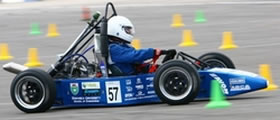
Auto and motor racing alike can be quite dangerous, even fatal, at times. Kinetic energy is a function of the square of speed. Energy is what does the damage in an accident and what needs to be dissipated to increase safety. So, by definition, hurtling along at high speed in a projectile can never be safe.
With the high, the slightest misjudgment, error, or case of bad luck can cause serious injury. Some are lucky enough to flirt with death and escape without harm. Others unfortunately are not. A properly designed and fabricated roll cage is a giant step toward increasing the level of safety of your car. This said a poorly designed roll cage with shoddy fabrication and installation can and has led to disaster.

Sometimes the goal of an innovation in F1 is not the pursuit of better performance, but rather of safety. Driver safety is the most important aspect to consider in the design of any racing car and especially an open wheel – open cockpit car, especially in the event of a rollover. The design of the principal and second roll structure for a Formula One car is strictly governed by a number of FIA regulations, and most importantly, must satisfy a number of tests governing a fabrication, design and safety crash tests as described in FIA 2011 Formula One Technical regulations, Articles 15 : CAR CONSTRUCTION (15.2 Roll structures) and ARTICLE 17 : ROLL STRUCTURE TESTING. In order to ensure the principal roll structure provides the best protection to the driver, the FIA outlines minimum strength requirements for the structure.
From FIA 2012 Technical regulations:
ARTICLE 15 : CAR CONSTRUCTION
15.2 Roll structures :
15.2.1 All cars must have two roll structures which are designed to help prevent injury to the driver in the event of the car becoming inverted.
The principal structure must be at least 940mm above the reference plane at a point 30mm behind the cockpit entry template. The second structure must be in front of the steering wheel but no more than 250mm forward of the top of the steering wheel rim in any position.is 1050mm in front of the rear of the cockpit
The two roll structures must be of sufficient height to ensure the driver's helmet and his steering wheel are at least 70mm and 50mm respectively below a line drawn between their highest points at all times.
15.2.2 The principal structure must pass a static load test details of which may be found in Article 17.2. Furthermore, each team must supply detailed calculations which clearly show that it is capable of withstanding the same load when the longitudinal component is applied in a forward direction.
15.2.3 The highest point of the second structure may not be more than 670mm above the reference plane and must pass a static load test details of which may be found in Article 17.3.
15.2.4 The principal roll structure must have a minimum enclosed structural cross section of 10000mm², in vertical projection, across a horizontal plane 50mm below its highest point. The area thus established must not exceed 200mm in length or width and may not be less than 10000mm2 below this point.
15.2.5 The second roll structure must have a minimum enclosed structural cross section of 10000mm², in vertical projection, across a horizontal plane 50mm below its highest point.
ARTICLE 17 : ROLL STRUCTURE TESTING
17.1 Conditions applicable to both roll structure tests :
17.1.1 Rubber 3mm thick may be used between the load pads and the roll structure.
17.1.2 Both peak loads must be applied in less than three minutes and be maintained for 10 seconds.
17.1.3 Under the load, deformation must be less than 25mm in the case of the principal roll structure and 50mm in the case of the second roll structure, measured along the loading axis and any structural failure limited to 100mm below the top of the rollover structure when measured vertically.
17.1.4 Any significant modification introduced into any of the structures tested shall require that part to pass a further test.
17.2 Principal roll structure test :
A load equivalent to 50kN laterally, 60kN longitudinally in a rearward direction and 90kN vertically, must be applied to the top of the structure through a rigid flat pad which is 200mm in diameter and perpendicular to the loading axis.
During the test, the roll structure must be attached to the survival cell which is supported on its underside on a flat plate, fixed to it through its engine mounting points and wedged laterally by any of the static load test pads described in Article 18.2.
17.3 Second roll structure test :
A vertical load of 75kN must be applied to the top of the structure through a rigid flat pad which is 100mm in diameter and perpendicular to the loading axis.
During the test, the rollover structure must be attached to the survival cell which is fixed to a flat horizontal plate.
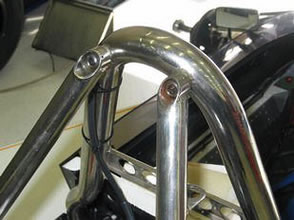 |
1973 & 1974 Yardley McLaren M23 Formula 1 car roll bar |
The high safety standards within all racing classes governed by FIA, and especially Formula 1 have become one of the sports many trademarks. Over the 61 year history, FIA have done a great job to improve the safety of the drivers and are constantly looking at ways to further improve the safety to all involved within F1. Today, Formula 1 car must have two roll structures to protect the driver in the event of the car overturning. One must be immediately behind the driver’s head, the other at the front of the cockpit, ahead of the steering wheel but no more than 250mm forward of the top of the steering wheel rim in any position.
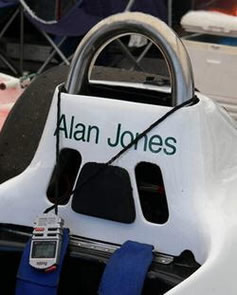 |
1978 Alan Jones Williams formula 1 car roll bar |
One of the first and most important safety features introduced into the sport in 1961 was the addition of the principal roll bar. 1968 FIA decided that roll bar must be minimum 50mm above driver helmet. 1976 additional forward roll over structure was made mandatory. 1999 this rule improved driver safety further by imposing new distance between line connecting main roll structure with secondary roll structure in the front of the driver to 70 mm. Since then, the teams have pushed the boundaries of design to ensure the principal roll structure is as light as possible, with minimal influence on aerodynamic performance, but still providing the best protection for the driver in the event of a roll over.
The design procedure used in Formula 1 is “semiquantitative” combining finite element stress analysis (FEA) with trial and error. The application of a purely theoretical numerical analysis is not practicable since detailed structural and materials data are not generally available. Instead the FEA engineers arrive at a “best guess” initial composite lay-up capable of resisting the applied loads and any anticipated extraneous scenarios. Tests are then carried out on prototype representative components to check the validity of the model and to provide more accurate input data.
To make this trial and error procedure as short as possible, F1 teams employ different software tools in order to meet these minimum structural requirements and ensure minimum mass whilst adhering to the aerodynamic needs and rules. Optimization software such as OptiStruct is used during the design and development process to assist in reducing the number of design iterations and time taken to design a lightweight and robust component. Because the principal roll structure is the highest point on a Formula One car, it is very important to ensure that the mass of it is at a minimum. Mass this high up on the car can have a significant effect on the centre of gravity and roll center of the car and as a consequence has a negative effect on the handling. As roll structures can weigh anywhere from 2 - 5kg a significant amount of mass can be saved within one component.
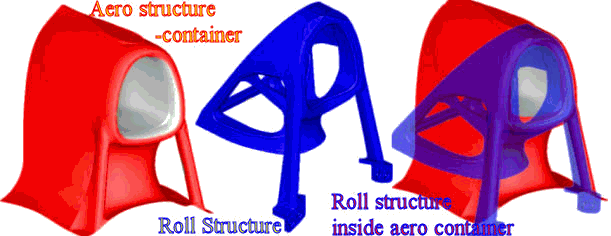
In formula 1, designer of the car and aerodynamicist make decision of best aero shape to contain actual roll structure enclosed inside this shape. The optimum material distribution within the design space is calculated using topology optimization and FEA. Actual roll structure enclosed inside aero shaped container can be made of carbon fiber composites or light metal material such magnesium or titanium.
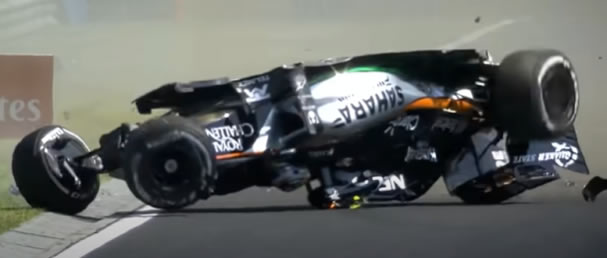
The use of a carbon composite has enabled the teams to make a weight reduction of the order of 15% whilst still passing the test. But anyway, light metals are still in use. Secondary roll structure is not visible because is build in monocoque of the car. But sometime you can see position of forward roll structure. Teams add small fin on top of it to increase height of the imaginary line connecting front and main roll structure.
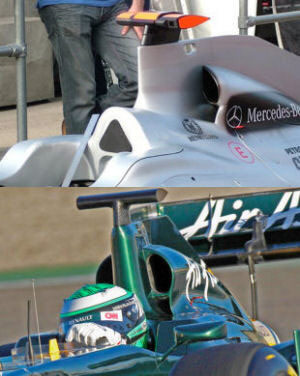 The roll structure on a Formula 1 car is designed to protect the driver in the event of a major accident but it also acts as the engine air intake and as such must be designed to comply with the aerodynamics of the car. If badly designed, this structure can destroy airflow to the rear wing. That’s why during 2010 and 2011 some teams made one step further by improving the design. One of the most striking details of the 2011 Lotus TL11 was a lack of standard roll hoop, and in its place was a ‘blade’. The concept is essentially the same as that employed on the Mercedes MGP W01 previous year, removing the hoop and relocating the intakes for the V8 engine to lower position on the engine cover, whilst fulfilling the requirement for a roll over structure with a solid central structure (or blade). This approach gives better air flow to the rear wing. After the MGP W01 version was fully revealed at the Spanish Grand Prix 2010, queries were raised about the safety of the concept, would the blade dig into the ground in a roll over?
The roll structure on a Formula 1 car is designed to protect the driver in the event of a major accident but it also acts as the engine air intake and as such must be designed to comply with the aerodynamics of the car. If badly designed, this structure can destroy airflow to the rear wing. That’s why during 2010 and 2011 some teams made one step further by improving the design. One of the most striking details of the 2011 Lotus TL11 was a lack of standard roll hoop, and in its place was a ‘blade’. The concept is essentially the same as that employed on the Mercedes MGP W01 previous year, removing the hoop and relocating the intakes for the V8 engine to lower position on the engine cover, whilst fulfilling the requirement for a roll over structure with a solid central structure (or blade). This approach gives better air flow to the rear wing. After the MGP W01 version was fully revealed at the Spanish Grand Prix 2010, queries were raised about the safety of the concept, would the blade dig into the ground in a roll over?
The rule makers took heed and the following appeared in the 2011 technical regulations:
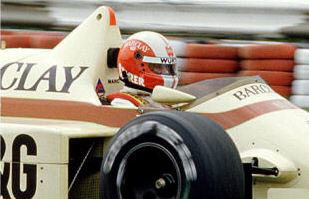 |
Arrows A8 was a Formula One car which the Arrows team used to compete in the 1985 and 1986 Formula One seasons. It was powered by the BMW M12 turbocharged engine looked after by Swiss engine guru Heini Mader. |
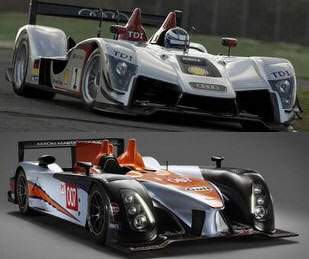 |
Audi R15 TDI LMP1 and Aston Martin AMS ONE LMP1 sport prototype cars |
15.2.4 The principal roll structure must have a minimum enclosed structural cross section of 10000mm², in vertical projection, across a horizontal plane 50mm below its highest point. The area thus established must not exceed 200mm in length or width and may not be less than 10000mm2 below this point.
Many took this as an outright ban on the blade concept but Mike Gascoyne and his team thought differently, and the Team Lotus TL11 meets the new regulation fully.
But roll blades are nothing new in Formula 1. They first appeared on a number of cars in the 1985 including the Arrows A8, Ligier JS25, RAM 03 and Brabham BT54. But the concept was short lived, fading out by mid 1986.
For open top or roadster sports racing cars the roll blade has become commonplace. In 2006 both Audi Sport and Courage Competition followed the approach with their Le Mans Prototypes, the latter notably having its chassis built by ATR Group. Today many top LMP sports cars use this concept including Aston Martin AMR One LMP1 and Audi R15 TDI LMP1 racing sport cars.
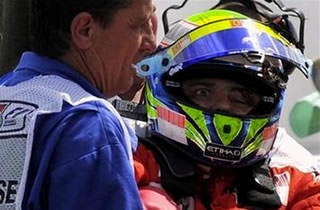 Around 1980s, the biggest concern tended to be severe leg injuries, or big crashes that might not have killed you, but gave you major problems for the rest of your life. There are a lot of open-wheel-open-cockpit drivers from the 1980s walking around with pronounced limps because of the vulnerability of drivers' legs in an F1 car in those years.
And Martin Donnelly is an example of the full-body crash. His Lotus pretty much exploded around him when he crashed at Jerez in 1990, and he was very badly smashed up in the impact.
Around 1980s, the biggest concern tended to be severe leg injuries, or big crashes that might not have killed you, but gave you major problems for the rest of your life. There are a lot of open-wheel-open-cockpit drivers from the 1980s walking around with pronounced limps because of the vulnerability of drivers' legs in an F1 car in those years.
And Martin Donnelly is an example of the full-body crash. His Lotus pretty much exploded around him when he crashed at Jerez in 1990, and he was very badly smashed up in the impact.
But as safety has improved in a number of areas - the understanding of carbon fibre, the majority of serious accidents now involve head or spinal injuries.
Head injuries were always the ones drivers are worried about, because the recovery from them is so unpredictable. And this is a large part of the reason why the F1 drivers were so sensitive to the high-speed head injuries.
F1 has been lucky in recent years with several accidents which could have harmed or killed the driver due to his exposure in an open cockpit.
Some say that tradition is important and that open cockpits should be open cockpits. I don’t agree with this. If something is dangerous and there is a solution then it is wrong not to at least consider it. As part of an extensive research program conducted in the wake of the Felipe Massa's near fatal head injury during the 2009 Hungarian Gp when a 1kg suspension spring from the car ahead came loose and struck his helmet just above his eye, breaking the helmet and his forehead bone, the death of Henry Surtees, the son of 1964 F1 world champion John Surtees, who died after being struck on the head by a loose wheel in a Formula Two race at Brands Hatch same year, or death of Justin Wilson from head injuries he sustained at Pocono raceway when loose nose cone from Karam’s car bounced so violently and tragically towards Wilson and hitting him in the head. The FIA Institute has already conducted a series of tests at an abandoned RAF Bentwaters airfield near Ipswich. The tests involved firing a wheel and tire, with a combined weight of 20kg, at 225km/h into three different safety concepts.
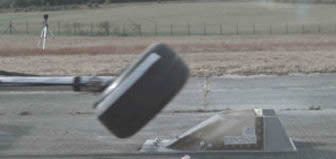 |
The piston on which tire/wheel is mounted is shot out with compressed nitrogen and detaches a split second before impact. |
The first, a triple layer polycarbonate, 30-mm-thick windshield-style protection shattered on impact but deflected the wheel and tire assembly away from the cockpit area. The second was a jet fighter canopy which successfully deflected the wheel assembly away without sustaining windshield damage. The third was a roll-hoop structure, theoretically to be placed directly in front of the driver on the edge of the cockpit, which deflected a head-on tire but has obvious shortcomings in terms of exposure and visibility for the person behind the wheel.
On the back of mixed test results for the shields - both canopies style protections were flawed to varying degrees. A 30mm polycarbonate windshield deflected the wheel but shattered, while a canopy from a jet fighter worked effectively but would cause other problems, including distorted vision, issue of weight (they add a lot of weight high up on the car, when low centre of gravity is desirable), driver entering and exiting the cockpit and driver extraction in case of an accident. How quickly would a cockpit canopy be opened by medical staff? Would damage to the surrounding chassis prevent the canopy from being opened? What will happen if they jam or car is up-side-down? Think back to the Austrian Grand Prix 2015, when Fernando Alonso's McLaren ended up parked on top of Kimi Raikkonen's Ferrari after a first-lap crash. Though a closed cockpit would have lessened the fear of the McLaren's sidepod hitting Raikkonen's head as they made contact, if the Finn had been in a state which required immediate medical attention a closed cockpit and Alonso's car on top of the canopy could have been a fatal combination. The another problems with canopies are around visibility. Distortion caused by the curvature of the screen, because they get dirty during the race, either of rain or dirt, all of which would hinder visibility. Jet pilots also often complain about distorted short-range vision from the curved windows of the canopies above their heads. This distortion is a minor issue in dogfights where the distance between aircrafts is often over 200-300 metres, but in a wheel to wheel battle in F1 where cars are separated by 10mm that distortion could be critical.
Then again, if the canopies are made detachable, perhaps they will fly off or be dislodged in an accident. BTW, can you imagine how will feel a driver closed inside a monocoque, below "glass" canopy during the race in Malaysia. Without air conditioning? And so it goes on…
Perhaps jet fighter-style canopy can stop intrusive objects, but perhaps they would also create even worse problems and further tragedies. Canopy will protect the driver from anything and everything outside the car which could cause serious injury. Undoubtedly, this sort of concept could have saved the life of Henry Surtees and Justin Wilson. But there are a downsides to it.
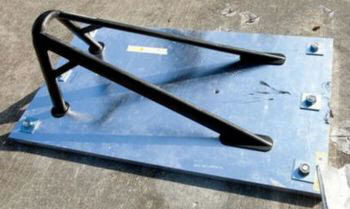 The roll-hoop structure built by the Lotus team was the most effective. The latest tests have involved using a titanium metal structure placed right in front of the driver, into which a 20kg F1 wheel is fired at 225 km/h, same as on other tests. And the forward roll hoop has so far received plenty of positive feedback. It was able to keep a wheel away from a driver's head. FIA tested it both by firing the wheel down the centre of the car, and also coming at it from an angle. The impact deflated the tire during both tests. They tend to think that's a good thing. It means the wheel doesn't bounce as much. It stops much more quickly if you can deflate the tire.
The roll-hoop structure built by the Lotus team was the most effective. The latest tests have involved using a titanium metal structure placed right in front of the driver, into which a 20kg F1 wheel is fired at 225 km/h, same as on other tests. And the forward roll hoop has so far received plenty of positive feedback. It was able to keep a wheel away from a driver's head. FIA tested it both by firing the wheel down the centre of the car, and also coming at it from an angle. The impact deflated the tire during both tests. They tend to think that's a good thing. It means the wheel doesn't bounce as much. It stops much more quickly if you can deflate the tire.
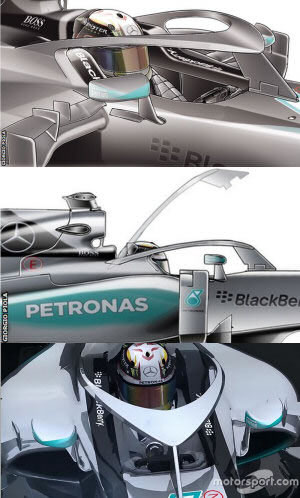 |
An artist's impression shows the 'halo' canopy, one of the ideas put forward by Mercedes to increase driver's safety. |
The main challenge for the innovators of F1 will be to produce a structure which sits forward of the driver to protect him, but which allows him unrestricted visibility. Tested rool-hoop structure build by Lotus has his flows with pillars in the front of the driver.
One of the leading figures in the F1 Technical Working Group is McLaren’s Paddy Lowe, “Obviously, a driver ideally wants nothing in the way but in the same way we drive a road car with pillars, you just get used to it, don’t you?”
In its official investigation into Jules Bianchi's fatal crash at Suzuka 2014, the FIA denied a closed cockpit would have changed the outcome: "It is not feasible to mitigate the injuries Bianchi suffered by enclosing the driver's cockpit.....due to the very large forces involved in the accident between a 700kg car striking a 6500kg crane at a speed of 126km/h." Indeed, it is telling that the roll-over structure was torn from Bianchi's Marussia by the severity of the impact despite being designed to withstand five tonnes laterally, six tonnes longitudinally and nine tonnes vertically without deforming more than 50mm in a test environment, and not the impact with the engine compartment of a stationary tractor. It is also worth highlighting that the canopy of a F16, it is designed to withstand a 2,000kph bird strike not a piece of heavy machinery at 100mph. Something the FIA Institute report points out.
There have been objections, many of which are on the basis that such devices are somehow contrary to the essential nature of the so-called DNA of single-seater-open-cockpit racing. But depending on which side of the Atlantic you are on, they are called either single-seaters or open-wheelers, not open cockpit. So, we really not so sure that open cockpits are the DNA of F1. While these types of racing cars have tended to be designed with open cockpits - and that design is now dictated by the specifics of the regulations - they are not intrinsic to the name of the sport. Equally, part of F1's image is about pushing boundaries, and safety is just as much a part of that as anything else. We want to reduce danger but removing it altogether is impossible. However, the sport can reduce the unnecessary risks and doing so is only logical. There is no such thing as "safe enough".
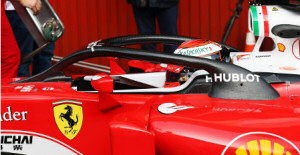 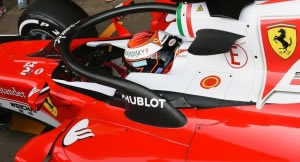 |
Day Three of the second Spanish test on the beginning of 2016 season at the Circuit de Catalunya saw Kimi Raikkonen trialed Ferrari’s halo cockpit protection for the first time after Ferrari attached it to Raikkonen’s SF16-H. The halo-shaped hoop connects to the front of the car with a central strut before surrounding the head before connecting just behind the helmet on either side of the car. This was a provisional structure made to test visibility from the cockpit. Kimi said it was ‘okay’ in terms of visibility, a bit limited by the halo front structure, but “surprisingly” less than he expected. Of course, this was just a provisional structure far away to be final. The FIA has developed the Halo system in conjunction with Mercedes.
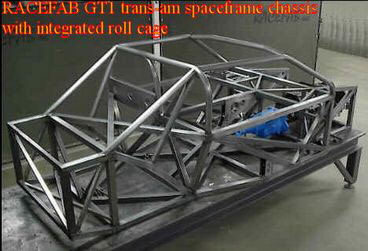 In closed cockpit racing, as a NASCAR, WRC or some other, a roll cage is a specially engineered and constructed frame built in (or sometimes around, known as an exo cage) the passenger compartment of a vehicle to protect its occupants from being injured in an accident, particularly in the event of a roll-over. Sometime, roll cage is an integral part of spaceframe chassis, and sometime just added part of existing car structure. The main feature of any good design is the extensive use of triangulation. Roll cages are used in nearly all purpose-built racecars, and in most cars modified for racing. There are many different types of materials used in roll cage tubing.
In closed cockpit racing, as a NASCAR, WRC or some other, a roll cage is a specially engineered and constructed frame built in (or sometimes around, known as an exo cage) the passenger compartment of a vehicle to protect its occupants from being injured in an accident, particularly in the event of a roll-over. Sometime, roll cage is an integral part of spaceframe chassis, and sometime just added part of existing car structure. The main feature of any good design is the extensive use of triangulation. Roll cages are used in nearly all purpose-built racecars, and in most cars modified for racing. There are many different types of materials used in roll cage tubing.
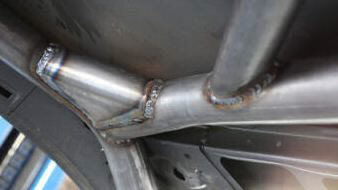 There is DOM (Drawn Over Mandrel) which is a mild steel tubing with a seam, it is rolled and welded and that is then trued by being drawn over a mandrel, mild steel seamless tubing and Chromoly (Chrome – Molybdenum) Steel tubing, which is the professional racing teams choice, because of its durability and its lightweight. Chromoly Steel weighs the same but is stronger and thinner wall tubing can be used saving weight. The disadvantage is that all welds must be heat treated which is difficult when the cage is assembled within a car.
There is DOM (Drawn Over Mandrel) which is a mild steel tubing with a seam, it is rolled and welded and that is then trued by being drawn over a mandrel, mild steel seamless tubing and Chromoly (Chrome – Molybdenum) Steel tubing, which is the professional racing teams choice, because of its durability and its lightweight. Chromoly Steel weighs the same but is stronger and thinner wall tubing can be used saving weight. The disadvantage is that all welds must be heat treated which is difficult when the cage is assembled within a car.
There are many different roll cage designs depending on the application, hence different racing organizations have differing specifications and regulations. Roll cages also help to stiffen the chassis and increases the torsional rigidity of your car, which is desirable in racing applications.
 A roll bar is a single bar behind the driver that provides moderate roll-over protection. Due to the lack of a protective top, some modern convertibles utilize a strong windscreen frame acting as a roll bar. Also, a roll hoop may be placed behind both headrests usually one on older cars, which is essentially a roll bar spanning the width of a passenger's shoulders.
A roll bar is a single bar behind the driver that provides moderate roll-over protection. Due to the lack of a protective top, some modern convertibles utilize a strong windscreen frame acting as a roll bar. Also, a roll hoop may be placed behind both headrests usually one on older cars, which is essentially a roll bar spanning the width of a passenger's shoulders.
 |
Ferrari California use a leading edge of the windshield as a main roll structure, and in addition deployable roll bars behind passenger rear seat. |
Because of the absence of a roof, the rear-seat passengers of road going convertibles are particularly exposed in the event of a rollover. In a convertible, the safety area in a rollover is on the one hand, by the upper edge of the windshield and in addition, by the roll bars placed behind the rear seats. Their height is of primary importance to ensure rear-seat passengers an adequate level of safety. Unfortunately, building these roll bars with sufficient height is incompatible with the elegant style of a convertible. To protect them effectively, while preserving the convertible aspect of the car, some car manufacturers are produced roll bars that deploy at the start of a rollover. When sensors detect an imminent rollover, the roll hoops quickly extend and lock in place to increase the safety zone. In the event of accidental deployment, there is no risk to the passengers, and a manual reset can be performed.
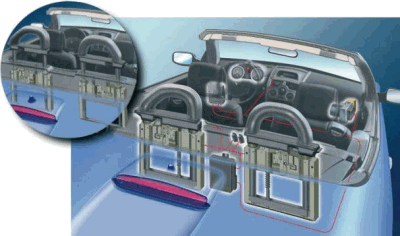
That form of rollover protection, pioneered on the Mercedes-Benz R129 in 1989, have a deployable roll hoops that are normally hidden within the body of a car. Cars that have a deployable rollover protection system include the Peugeot 307 CC, Volvo C70, Mercedes-Benz SL 500, and Jaguar XK, Ferrari-California and some others.
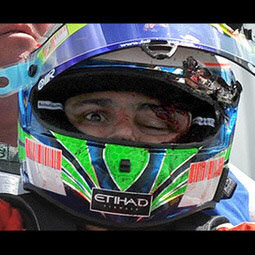
| Surtees' son killed in race crash The son of motorsport legend John Surtees has been killed in a "freak" accident during a Formula Two (F2) race at Brands Hatch in Kent. Henry Surtees, 18, was flown to the Royal London Hospital after he was struck by a wheel which flew off Jack Clarke's car. His father, John, who won the Formula One World Championship in 1964, said Henry would be "deeply missed". "Henry had followed his heart from the time he first sat in a kart," he added. Sunday's race was red-flagged while Surtees was removed from the scene. The accident happened between the circuit's Westfield Bend and Sheene Curve. Clarke's car hit a tire wall and a wheel came off, hitting Henry Surtees on the head and knocking him unconscious. The teenager's car then struck the trackside barriers. World Touring Car driver Andy Priaulx, who was at the Kent race circuit on Sunday, said: "Our sport can be cruel, but never cruller than when it claims a life. It is a tragedy when this happens and yesterday we witnessed this at Brands Hatch. His death highlights the dangers that we face." |
Felipe Massa's Career-Threatening crash at Hungarian GP Earlier today, during the qualifying session for tomorrow’s Formula One race in Hungary, Felipe Massa was hit in the head by what appeared to be a spring, which had fallen off another car on the track. The incident comes few days after Formula Two driver Henry Surtees, 18, was killed in what was described as a "freak" accident during a race at Brands Hatch. Upon first glance, it seems like a harmless accident, but when replays were slowed down, the object could be seen flying directly at the head of Massa. Apparently what happened is that a suspension spring came off BrownGP car driven by Rubens Barrichello, and the spring ended up hitting Massa in the helmet. The impact against his head knocked Massa unconscious, and Massa ends up crashing into the tire wall at around 125mph. The Brazilian, who was airlifted to AEK hospital, suffered fractured skull and a concussion. He requires operations and will remain under observation in intensive care for the time being. Surgery was conducted on Massa in Budapest, and his condition was noted as "life threatening but stable". |
Very good article on this subject from "Racecar engineering" you can find here.






